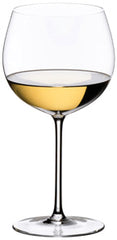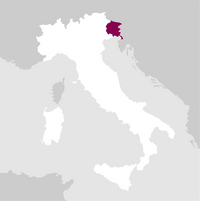Awards
Details

Perfume

Color

Taste
Serve at:
12 - 14 °C.
Longevity:
05 - 10 years

Pairings
- Start up year: 1881
- Oenologist: Luca Belluzzo
- Bottles produced: 1.500.000
- Hectares: 180
1930-1940: Angelo Jermann, who is 93 today, not only continues the family's grape-growing tradition but also keeps livestock and transforms Jermann into an all-around, successful farm.
1971-1973: Silvio Jermann, son to Angelo and Bruna and an enology graduate of both Conegliano and San Michele, revolutionizes the Jermann winery after a research sabbatical overseas, creating Vintage Tunina.
1975: Official release of Vintage Tunina, which fast achieves cult status and effectively launches Jermann's new course.
07/07/2007: Silvio inaugurates a second Jermann winery: Ruttars. Read more


| Name | Jermann Vintage Tunina 2019 |
|---|---|
| Type | White still |
| Denomination | Venezia Giulia IGT |
| Vintage | 2019 |
| Size | 0,75 l |
| Alcohol content | 13.0% by volume |
| Grape varieties | Chardonnay, Malvasia Istriana, Ribolla Gialla, Sauvignon |
| Country | Italy |
| Region | Friuli-Venezia Giulia |
| Vendor | Jermann |
| Story | Tunina was both the name of the lady who was the first owner of this vineyard and Casanova’s poorest lover (she used to be a housekeeper for a Venetian family and her name was Tunina, a nickname of Antonia), whom the wine is dedicated to The vintage 2015 of Vintage Tunina represents its 40th vintage, as remarked by the triangle at the top. As early as 1979 Luigi Veronelli called it the ‘Mennea of Italian wines’ (Pietro Mennea was an athlete who in Mexico City on the 12th September 1979 run the 200 meters and won the competition with a time of 19’’72, this way setting the world record and holding it for 17 years). Its vintage 1997 won Wine of the year by Gambero Rosso on the 28th November 1999 and since the same day Silvio Jermann’s daughter was born, she was given the name of Sylvia Tunina. Finally the vintage 1998 won the Wine Oscar from the A.I.S (Associazione Italiana Sommelier). |
| Origin | Dolegna del Collio (GO) |
| Climate | Exposure: Southwest, Northeast. |
| Soil composition | Mainly marl and sandstone (dating back to the eocenic age). |
| Cultivation system | Guyot-Cappuccina. |
| Plants per hectare | 6000-7000 |
| Yield per hectare | 40 – 60 q. |
| Wine making | A part of the fermentation is carried out in wooden barrels of 80 hectolitres and a part in steel. |
| Aging | One part in wooden barrels of 80 hectolitres and one part in steel where it stays 9 months before bottling. Refined in glass for about 7 months. |
| Total acidity | 5.4 gr/L |
| Year production | 65000 bottles |
| Allergens | Contains sulphites |










